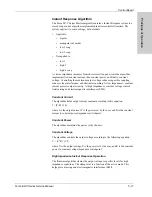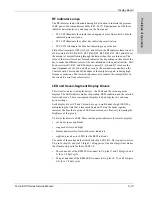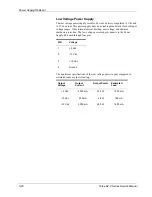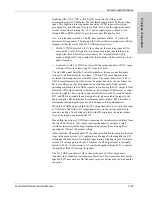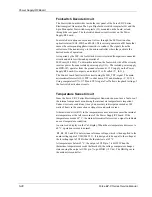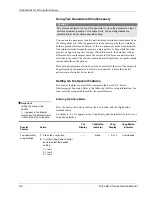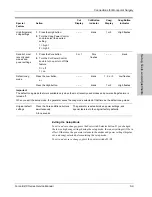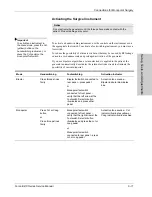
Power Supply/RF Board
Principles of Operation
Force EZ-C Series Service Manual
5-25
RF Leakage Sensing and Reduction Circuit
For the high (fulgurate) settings, the pulse repetition period for high voltage RF
output varies with changes in spark and patient tissue impedance to limit the RF
leakage current to a desired level. The divider (R90, R94) located on the primary
side of T4 produces the VSENSE signal. VSENSE goes to a negative peak
detector (U20A) that generates the analog signal (VPEAK–). Then U21A
amplifies and inverts the signal.
The averaged signal (now called VPK+) goes to the feedback microcontroller on
the Control board, which adds it to the ECON value at the selected power setting.
The sum of these signals, with the proper gain factors, varies linearly with load
impedance at the patient site. This sum enters into a pulse width modulator (also
part of U11) on the Control board, which sends its output (WAK\) to the NAND
gate (U10) on the Control board. This action inhibits the T_ON\ signal for up to
four consecutive cycles.
REM Circuit
The REM transformer (T10) provides isolated reflected impedance sensing for
tissue impedance across the REM patient return electrode terminals (connected to
J17 and J19). In addition to tuning the REM circuit, capacitors C149–C151 and
C157 provide a return path for high frequency RF signals to the RF output
transformer.
The REM transformer (T10) and capacitors C149–C151 and C157 form a
resonant circuit with a nominal operating frequency of 80 kHz. This frequency is
positioned between RF output harmonics to prevent electrosurgical RF noise from
corrupting the impedance measurement. The resonant characteristics of the REM
circuit are similar to those of a band pass filter. This arrangement heavily
attenuates spectral components outside the 80 kHz pass band while allowing the
80 kHz components to pass. When the resonant circuit is perfectly tuned, the
primary voltage and current are exactly in phase.
REM Oscillator
The REM oscillator is a stable adjustable ceramic oscillator. R125, a temperature
dependent resistor, provides temperature compensation. The REM_CLK signal
from driver U29A actually provides the REM current to the REM transformer
(T10). The REM_DRV signal is an inverted version of this signal that correctly
times the REM voltage sensing. The main microcontroller on the Control board
uses digital potentiometer U26 to calibrate the REM circuit during calibration.
IsoBloc Circuit
The IsoBloc circuit provides a means of detecting a switch closure in an output
accessory while maintaining electrical isolation between the generator output and
ground referenced circuitry. The IsoBloc circuit consists of an isolated DC power
supply and an optoisolator link from the output connected circuitry to the ground
referenced low voltage circuitry. Each handswitching output of the generator
(multipin monopolar and bipolar) is associated with its own IsoBloc power source
and isolated signal paths.

